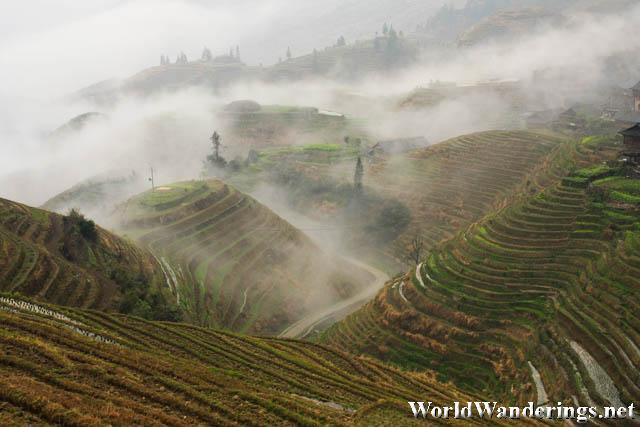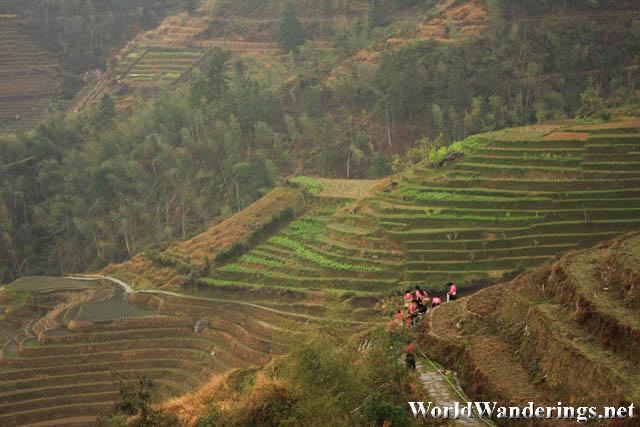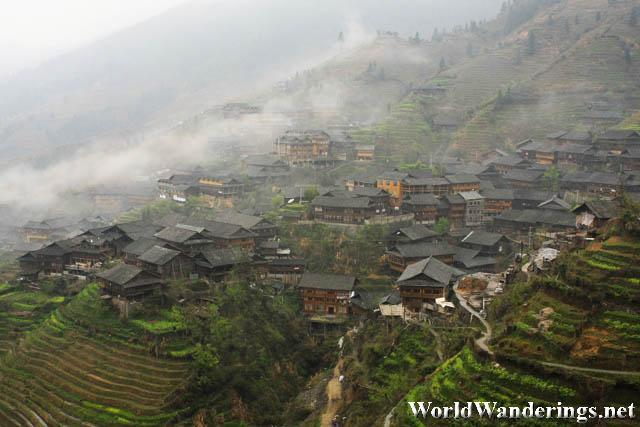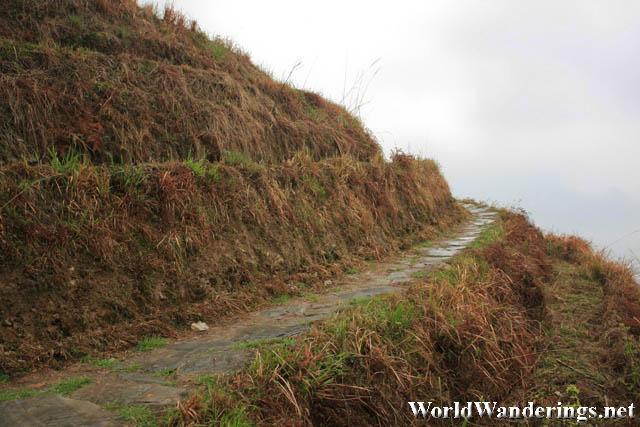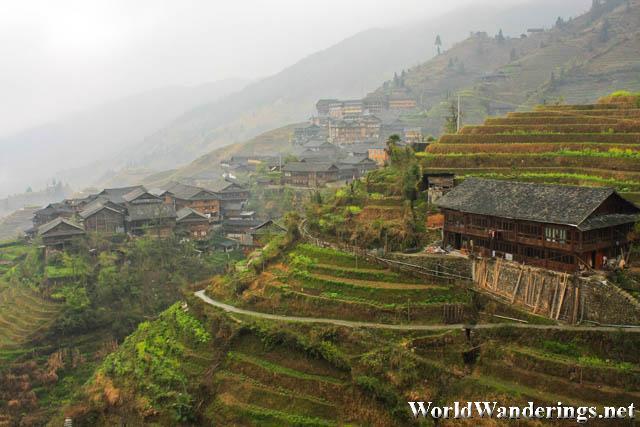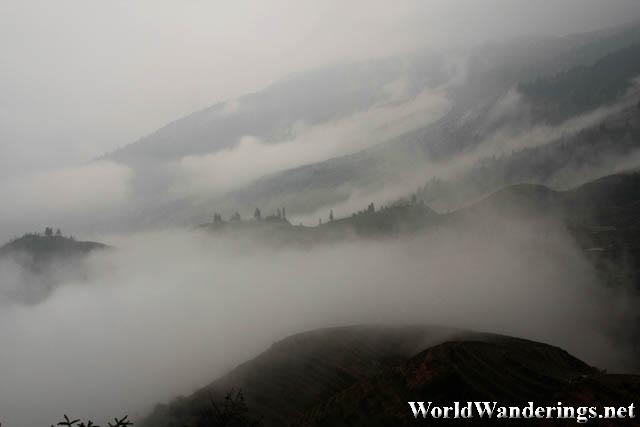The main reason everybody comes to Pingan village is to marvel at the magnificent rice terraces built on the mountainside. Rice is an important part of the diet of the people here, mountains have made it difficult to plant rice which needs flat land to plant on. As usual, necessity is the mother of invention, they local people carved terraces from the mountains to enable the planting of rice.
I woke up early to hike through the viewpoints 1 and 2 hoping to be able to get good photos. Unfortunately, the sky was not coorperating and it was really cloudy. Sometimes the clouds would cover the entire village and the terraces themselves. It was too bad since I was really looking forward to photographing the terraces.
Despite being on top of a mountain, it was no longer that cold and it was ok for me to leave my jacket behind. This is good since I can move around more freely. I had to walk behind A Meng House through several houses to get to the main hiking path up the ridge. The hiking path was well paved and was safe, although there were portions of the path which leave nothing between the trekker and the villagges below.
The path itself was quite easy with gentle slopes, this is a welcome change from all the stair climbing I have been doing ever since I came to China. Not before long I reached Viewpoint 1. As expected there was magnificent view from the Viewpoint. It was also expected that there will be souvenir shops here in the Viewpoint. There were some tourists here at the Viewpoint 1 but not that hordes that I dread. I took a couple of photos from the Viewpoint and moved on.
The second viewpoint was a few hundred meters away from the first viewpoint. The path here doesn’t see too many people yet so it was a nice walk for me. The sight of Pingan village getting smaller and small is really nice. From this distance, I can see the entire village and how a huge cloud bank seems to slowly engulf the entire village. It was a magical scene. Although I wasn’t able to get sunny shots of these terraces, this is just as good.
From a distance, you can see why these have been named the Dragon’s Backbone Rice Terraces. The terraces layered appearance give the impression that is the back of a huge dragon. Chinese can really give the most colorful names to places or things. On my way to the second viewpoint, I encountered this group of ladies in bright pink attire. They are the Yao minority group. The ladies in particular are known for their extremely long hair which they only cut a few times in their life. With the growing tourist trade, there is more incentive for them to keep their hair long.
One of the Yao women asked me if I wanted to take a photo of her. I felt that it would be quite touristy for me to do something like that but seeing the magnificent background of the Dragon’s Backbone Rice Terraces made me change my mind. She began to unfurl the long hair that is wound around her head much like a turban. And it was really very long. In fact she even had another previously cut roll of hair which is just as long as her current one.
I got to the Viewpoint 2 from there and rested a few mintues just looking at the wonderful scenery before me. This is not the first time I’ve been to rice terraces, so seeing this, it is not really a stranger to me. The Dragon’s Backbone Rice Terraces were built in Yuan Dynasty around 800 years ago, construction of the terraces only finished a few decades ago, so with regards to rice terraces this seems to be pretty young. This was a project of the Zhuang minority group. Although they are not the only minority group living in this area.
I probably didn’t go at the right time since it was really foggy so contrast wasn’t really that great. The terrace themselves were great although I would have to say that the terraces in Banaue and Batad in the Philippines are more spectacular than this. Like those places, Dragon’s Backbone Rice Terraces holds a lot of hiking potential and it is possible to walk from Pingan Village all the way to the Da Zhai 大寨 where it is said to offer better off the beaten track experiences.
The rice terraces can be visited in the four seasons, but it would be most interesting to see them just after planting when the field sparkle with water, just before harvest with the golden color of the rice plants and finally during winter when they are covered in snow. Unfortunately, for me I didn’t have the luxury of time since I have a schedule to keep. Besides, I need to meet up with the ladies from the previous day. This place is definitely worth staying a few days for. I would love to explore the fascinating minority village this place has to offer.
[xmlgm {http://www.worldwanderings.net/kml/LongjiRiceTerraces.kmz} zoom=14]
